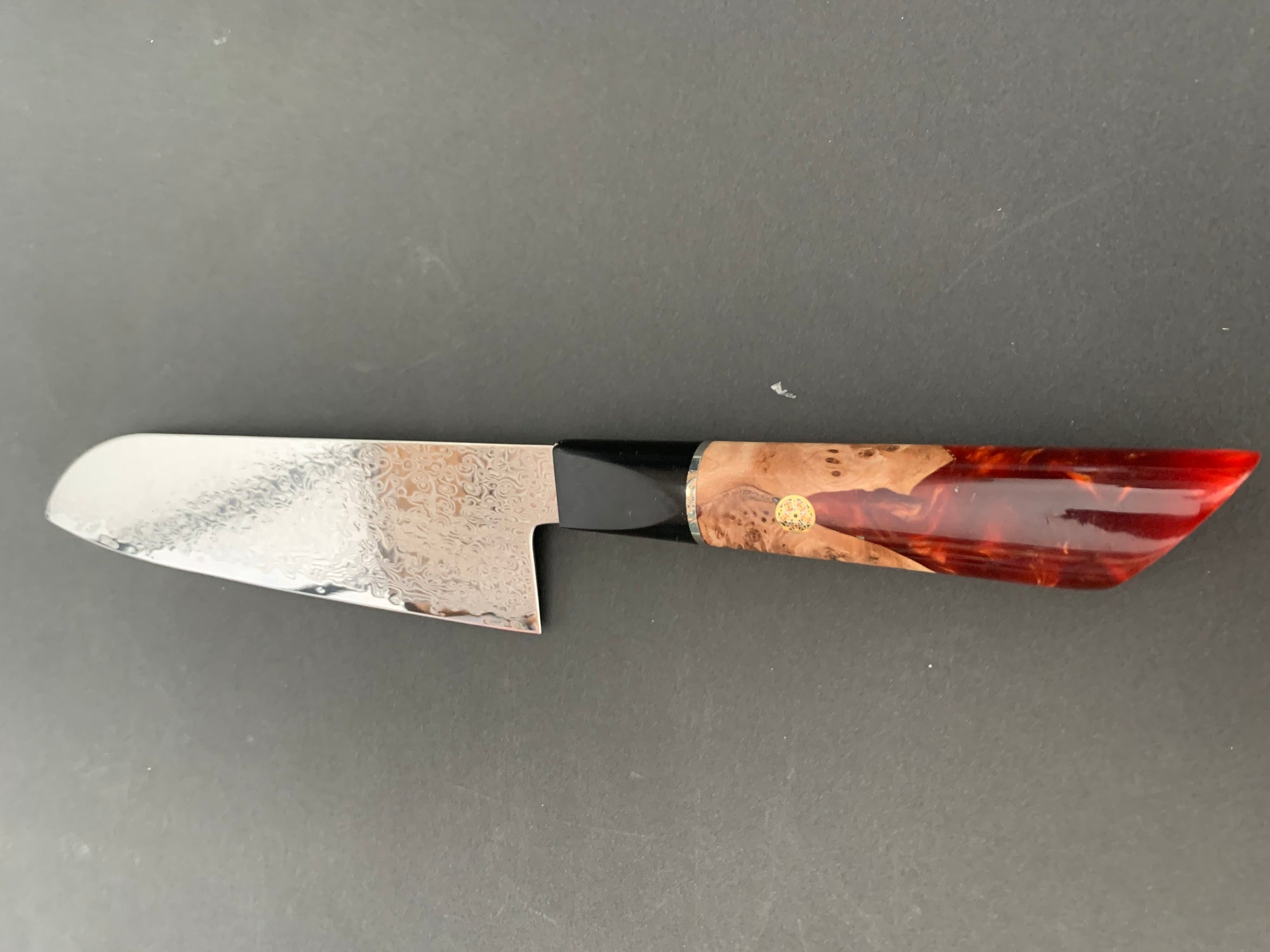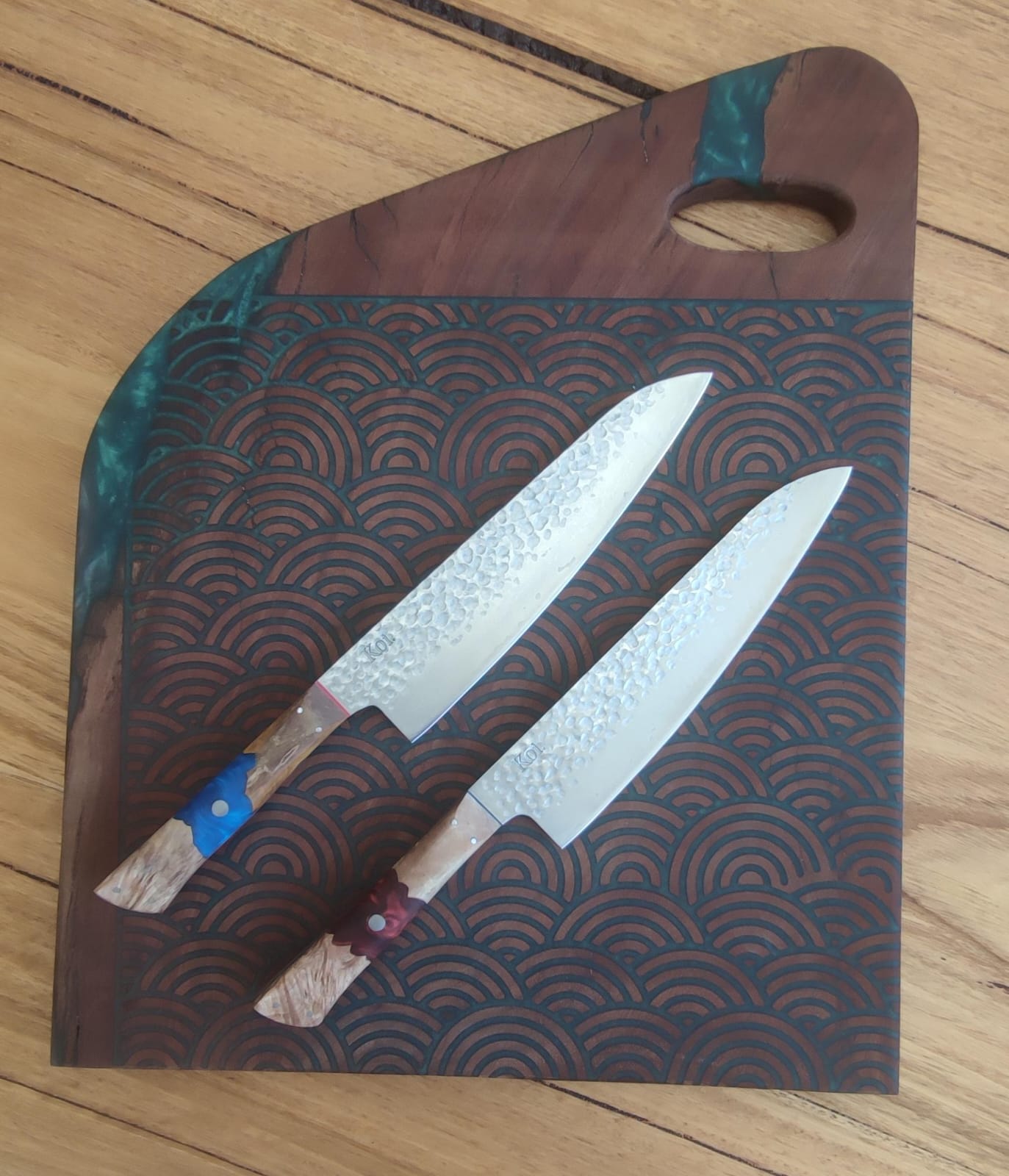
If you are ever looking for a dependable multipurpose chef’s knife for your kitchen, then the santoku knife will be top of the recommendations. The santoku, along with the gyuto and a reliable Western chef’s knife such as the Wursthof can make for a true kitchen workhorse.
Even if you already have a good chef’s knife in your kitchen, it’s good to add some variety with a versatile tool like the santoku which is ultra-thin, ultra-sharp, lightweight and versatile enough to handle different cutting tasks in the kitchen.
The santoku is a Japanese-style chef’s knife that has grown in popularity in Australian kitchens. Many versions of this knife have made their way into kitchens not just in Australia, but across the Western world.
The name itself translates to “three virtues” or “three uses”, alluding to the knife’s usage in cutting meat, fish and vegetables or to the three cutting styles that you can put this general-purpose Japanese-style chef’s knife into, namely - slicing, dicing and chopping.
Unlike the gyuto with its slight curvature on the belly, the santoku blade has a flat cutting edge and a rounded sheepsfoot edge as opposed to a sharp-pointed edge found in the gyuto knife or the Western chef’s blades.
Japanese blades are known for ancient provenance but the santoku is a more recent addition to the repertoire of specialty Japanese kitchen knives.
It actually made its way to the Japanese knifemaking tradition and culinary world in the mid-20th century when Japanese knifemakers and chefs adapted the traditional Western-style chef’s knife to Japanese uses. The santoku knife is therefore more of a Western-style Japanese kitchen knife or the quirky Japanese take on the classic Western chef’s knife.
It differs from the traditional Japanese kitchen knives in a myriad ways. For one, the santoku knife is a double-bevel kitchen knife like most Western knives. The traditional Japanese blades are usually single bevel or single-sided.
The double-bevel blade has several advantages for a Western kitchen and cuisine: they are easy to sharpen, easy to master and you don’t have to grapple with ‘handedness’ so they can comfortably be used by both left-handed and right-handed cooks.
Japanese blades are also fashioned from a hard carbon steel which has excellent edge retention quality but is very prone to chipping when used on harder produce or bones.
A Western style knife has the characteristic even double-bevel edge geometry. The Western kitchen knives are also made from softer steel and are therefore less prone to chipping when used on harder produce so you can use them to hack through bone and other harder produce. Western knives can afford some rough handling on your part compared to a Japanese kitchen knife such as the santoku.
With the santoku, you get a little bit of the two knifemaking traditions. They are double-bevel Japanese kitchen knives made from hard steel. The edges would usually have good retention.
One of the most important aspects of the santoku knife that has a direct impact on the slicing action is its profile.
The santoku is thinner and they tend to be shorter than the chef’s knives. The typical santoku blade has a length ranging from 6 to 7 inches.
They have neither a dramatic or graceful curvature in the belly like in the gyuto blade or the Western chef’s knife. Instead, their blade is flatter and is better suited for short downward strokes.
The santoku blade is taller compared to that of the gyuto knife so the knife gives you a little bit of heft that you would otherwise not find in shorter kitchen knives. The santoku blade is quite distinctive and easy to recognize. The spine of the blade curves downwards towards the tip to give its characteristic sheepsfoot blade, the kind that you are more likely to find in paring knives.
Choosing a Great Santoku Knife
Picking ‘the best’ kitchen knife for your needs is often a very subjective decision. However, it is also determined by very practical considerations such as the kind of food you prepare, your technique, the size of your hands and how big or small your kitchen workspace is, amongst others.
When looking for the ideal santoku knife, there are a number of practical requirements that you need factor into your decision.
Ensure that the kitchen knife is sharp right out of the box. Some knife experts may prefer to add their finishing touches on their knife acquisitions, but if you are an average chef or home cook, it is advisable to start out with a knife that is at its peak sharpness. This will give you a great head-start with the knife before you need to have it sharpened by a professional.
The ideal santoku kitchen knife should also have a light weight and be very comfortable to wield. After all, the top reason you should be going for a santoku knife in the first place is when you are looking for a lightweight multipurpose kitchen knife with some heft and nimbleness. The santoku knife is often compact and easy to use. This is the kind of knife that you can trust random guests with. It is easy enough to wield no matter your technique or size of your hands.
Can it cut vegetables?
The santoku is a “three virtues” kitchen knife which means it should handle pretty much all ingredients and produce in the kitchen. However, like in any kitchen, you will mostly use your santoku knife on fruits and vegetables. You will be regularly using your santoku to slice tomatoes, dice your onions and carrots or to mince your garlic.
The santoku knife will easily slice the taut and slippery skin of the tomatoes without crushing its soft flesh. It should also smoothly slice your carrots without cracking them. You can easily use your santoku knife to make brunoise.
Will it Cut Meat?
The ideal santoku knife will easily slice your meat and even break down your chicken. This is a knife that you can easily use to slice your meat into smaller pieces or thin strips.
The santoku isn’t necessarily the first-choice butchering knife. There are specialty blades that you can use for that. But for normal slicing and carving in your home kitchen, this general-purpose kitchen knife should suffice. The knife is lightweight and sharp enough to easily slice through the meat or poultry.
Can it Cut Fish?
Most home cooks will try as much as possible to avoid filleting fish but it is a job your santoku knife will handle quite well. There are more specialized knives that you can use for this purpose but if you aren’t comfortable with the traditional Japanese slicer or Western slicers, you can use this thin and light all-purpose kitchen knife.




